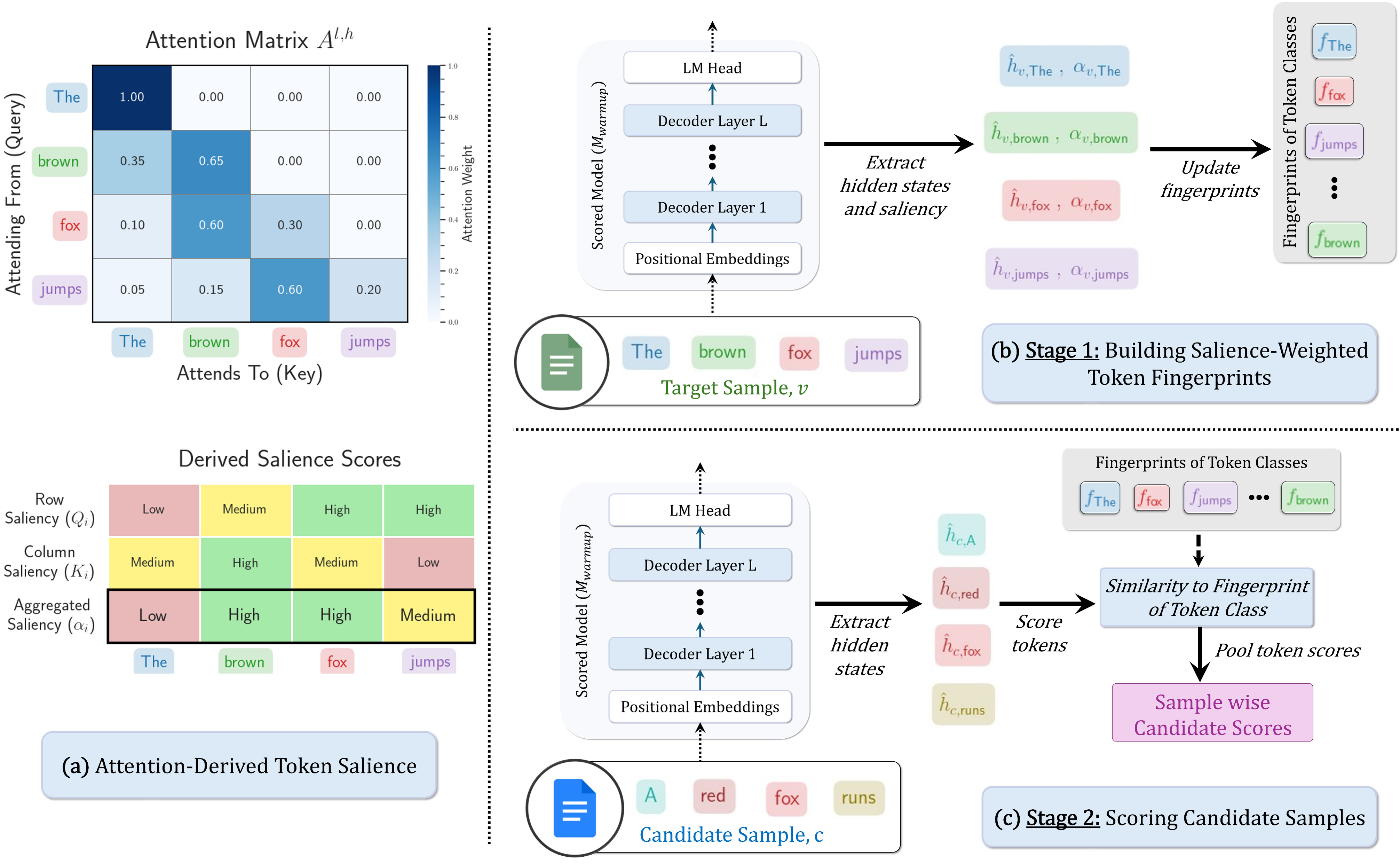TRIM
Token-wise attention–derived saliency for efficient instruction-tuning data selection (forward-only).
At a glance — why TRIM matters
Instruction tuning works best with small, high-quality data, not just more data. TRIM (Token Relevance via Interpretable Multi-layer attention) builds a coreset by matching token-level patterns from a tiny target set (5–10 samples) against a large candidate pool — using only forward passes. Result: coresets that can beat gradient/Hessian baselines and, in some settings, even surpass full-data fine-tuning at a fraction of the cost.
Motivation
Most selection methods rank whole examples using coarse, sample-level signals (gradients, Hessians, per-sample losses). That’s pricey and misses the fact that a few tokens often carry the signal (reasoning steps, operators, entities). TRIM flips the perspective: it scores tokens first—then rolls them up into example relevance. You keep examples that contain task-defining tokens; you skip those that don’t.
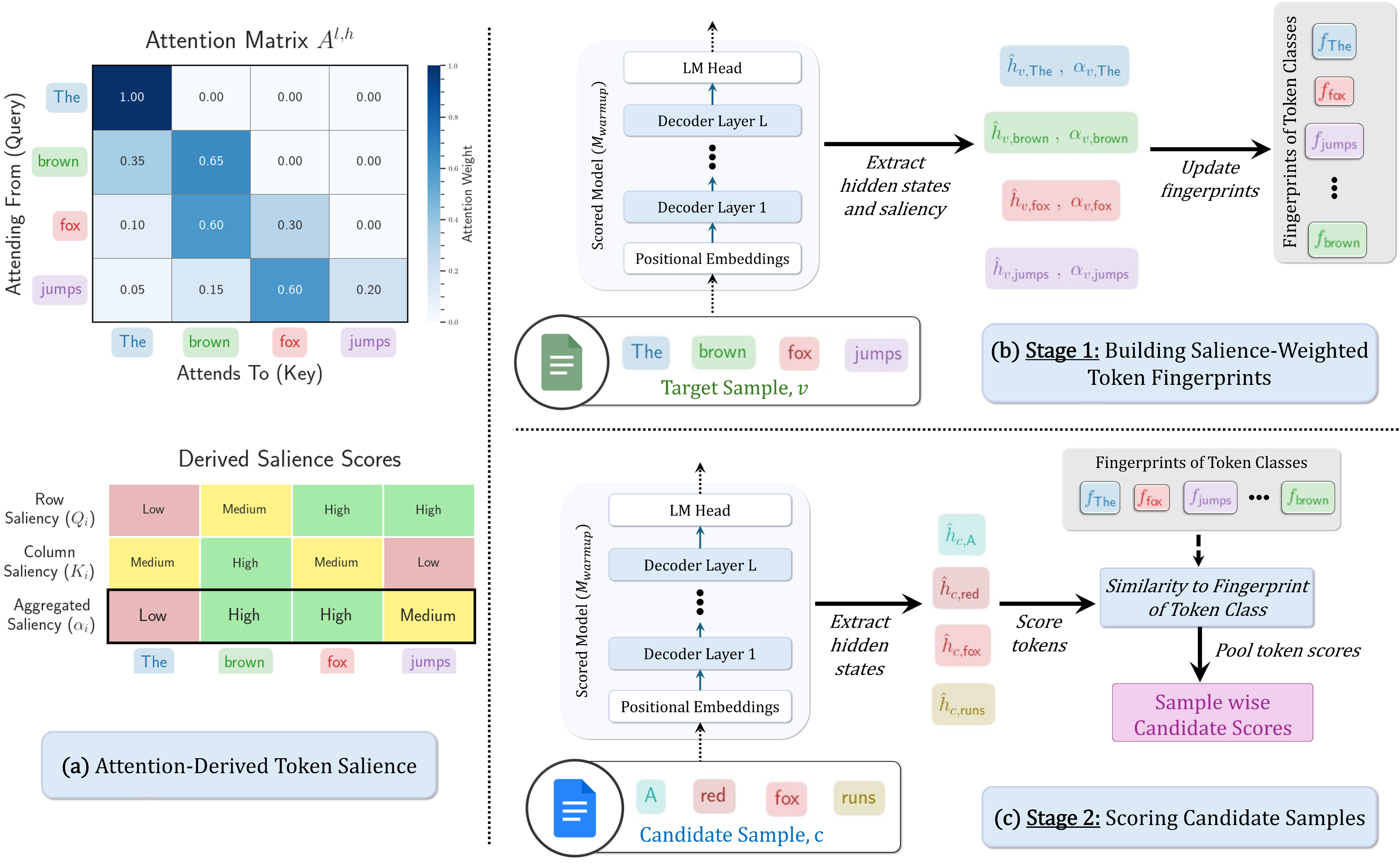
What TRIM actually does
- From the last $L$ layers of a warmed-up model, read attention to compute token saliency that blends two views:
- Row saliency (how sharply a token allocates attention).
- Column saliency (how much attention a token receives).
- With 5–10 target samples, build one fingerprint per token class: a saliency-weighted mean of last-layer token states that captures the task’s structural patterns (e.g., operators, reasoning markers).
- For each candidate example, compare each token’s hidden state to its token-class fingerprint (cosine). Pool token scores (mean + max) → example score → rank → coreset.
Let $\alpha_i = \tfrac{1}{2}Q_i + \tfrac{1}{2}K_i$ be the aggregated saliency for token $i$ (row $Q$ + column $K$).
For token class $t$ with target tokens $(v,i)\in O_t$ and last-layer states $h_{v,i}$, the fingerprint is \(f_t \;=\; \frac{\sum_{(v,i)\in O_t} \alpha_{v,i}\,\hat h_{v,i}}{\left\lVert \sum_{(v,i)\in O_t} \alpha_{v,i}\,\hat h_{v,i} \right\rVert_2}, \quad \text{where } \hat h_{v,i} = \frac{h_{v,i}}{\|h_{v,i}\|_2}.\) For candidate token $j$ with class $t_j$, score $s_j=\cos(\hat h_{c,j}, f_{t_j})$ (or use a nearest fingerprint with penalty $\lambda$ if $t_j$ unseen). Example score: \(S(c) \;=\; \tfrac12\,\mathrm{mean}(\{s_j\}) \;+\; \tfrac12\,\max(\{s_j\}).\) (One forward pass per candidate; no gradients.)
Results & observations
- Budgeted accuracy (5%) — On LLAMA-3.2-1B, TRIM attains the best macro-average and is the only method whose 5% coresets surpass full-data on two tasks (SocialIQa and HellaSwag). Across budgets, TRIM consistently outperforms top baselines.
- Low-overlap transfer (GSM8K) — From a non-math corpus, 5% TRIM nearly matches full-data; at 1% and 5% it beats gradient/trajectory baselines by large margins.
- Cross-model transfer — A single 5% coreset chosen by a 1B scorer transfers to LLAMA-3.1-8B and Mistral-7B, matching or beating the in-model oracle.
- Length bias — TRIM’s token-centric scoring is length-agnostic; selected examples are longer and richer than gradient baselines, avoiding the short-sequence bias.
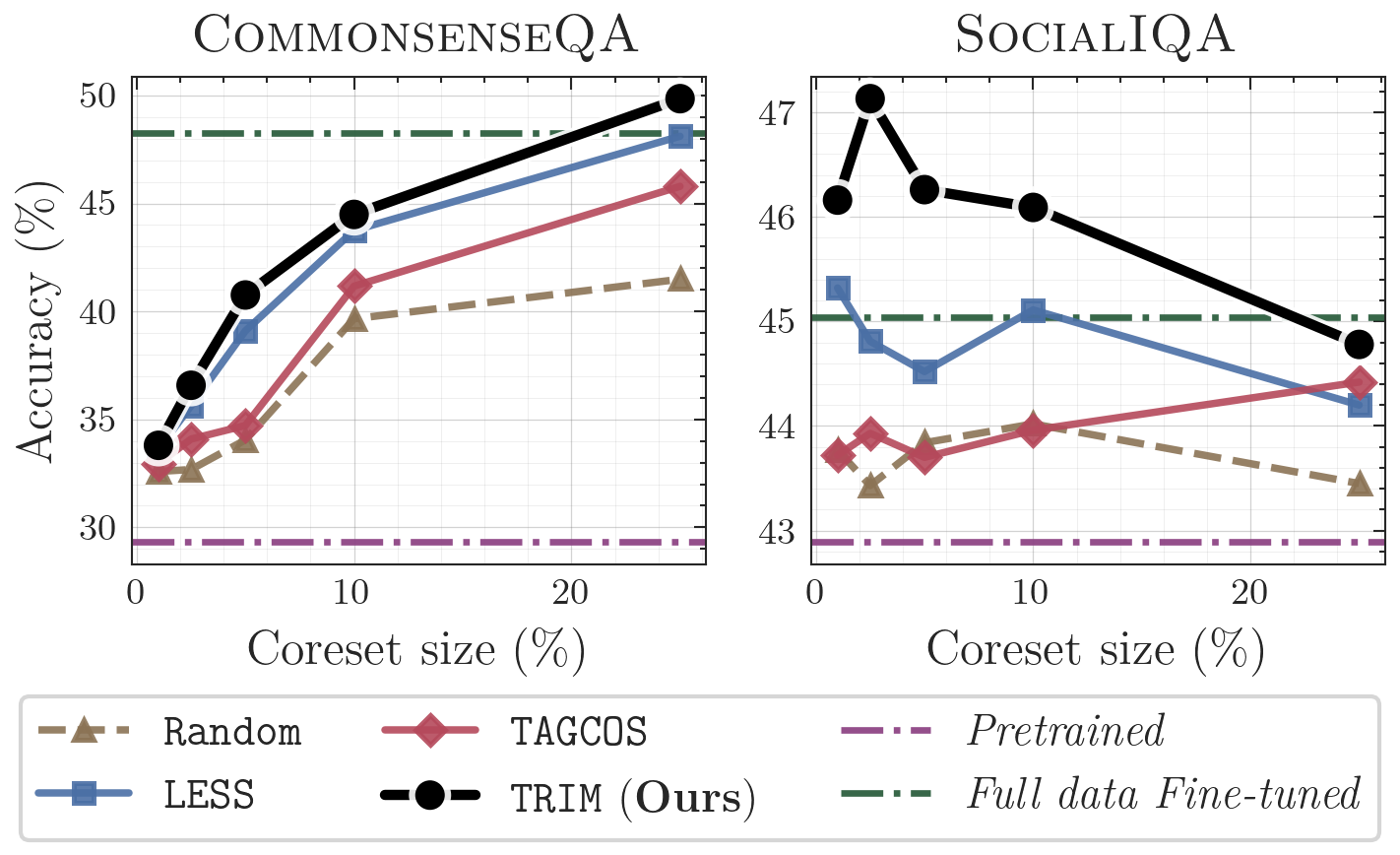
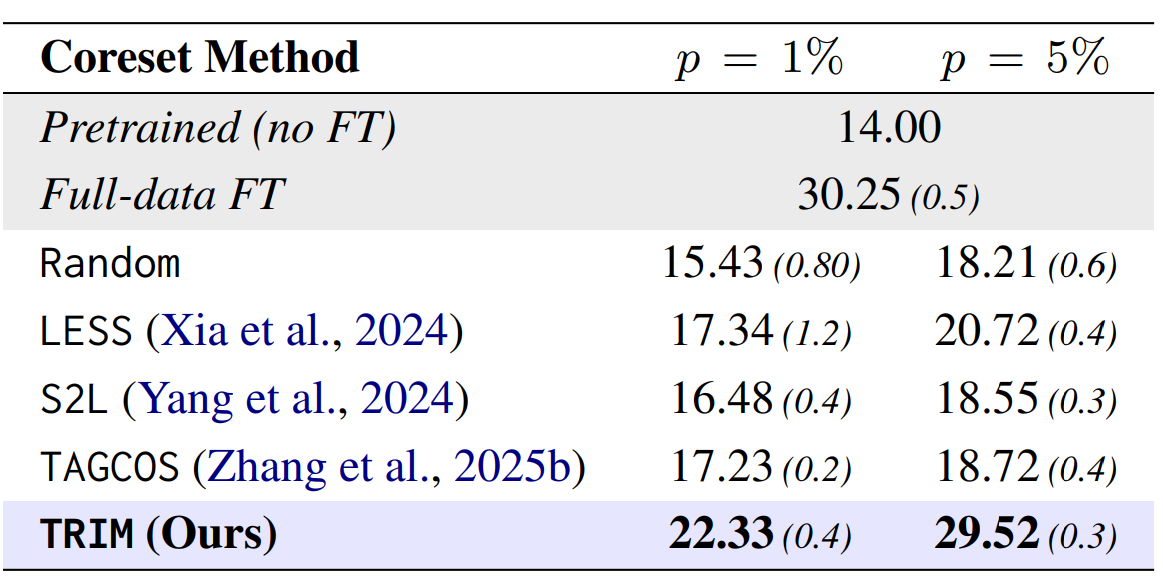

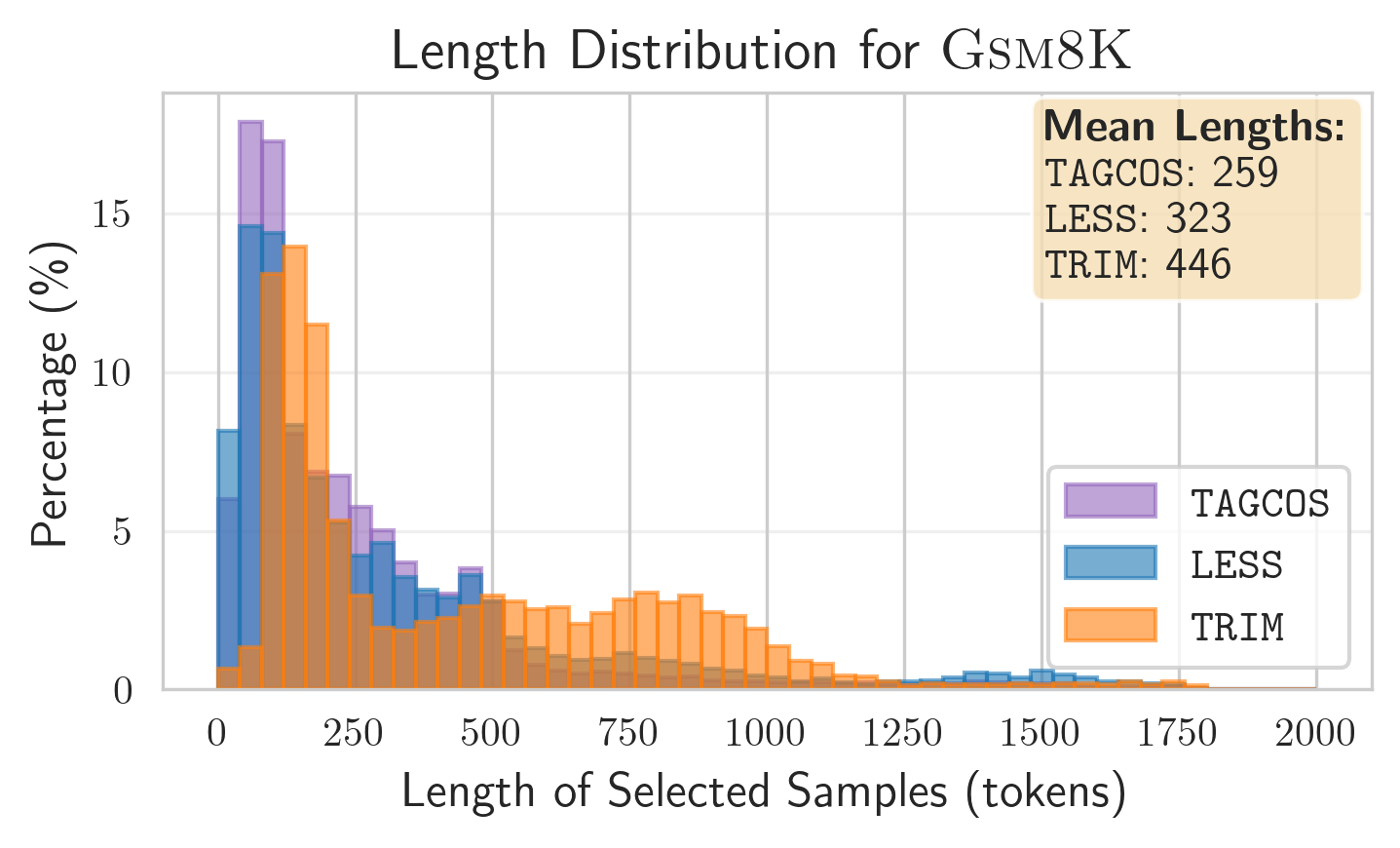
Efficiency (why this scales)
TRIM is forward-only at scoring time (one pass per candidate, single checkpoint), so the selection stage scales as $\mathcal{O}(fN)$ after a brief warmup. Gradient baselines (e.g., LESS/TAGCOS) require backward passes and/or multiple checkpoints $C$, pushing cost toward $\mathcal{O}(3fNC)$; trajectory methods (e.g., S2L) can require training on all candidates for logs. In practice, TRIM is orders of magnitude faster on large pools.
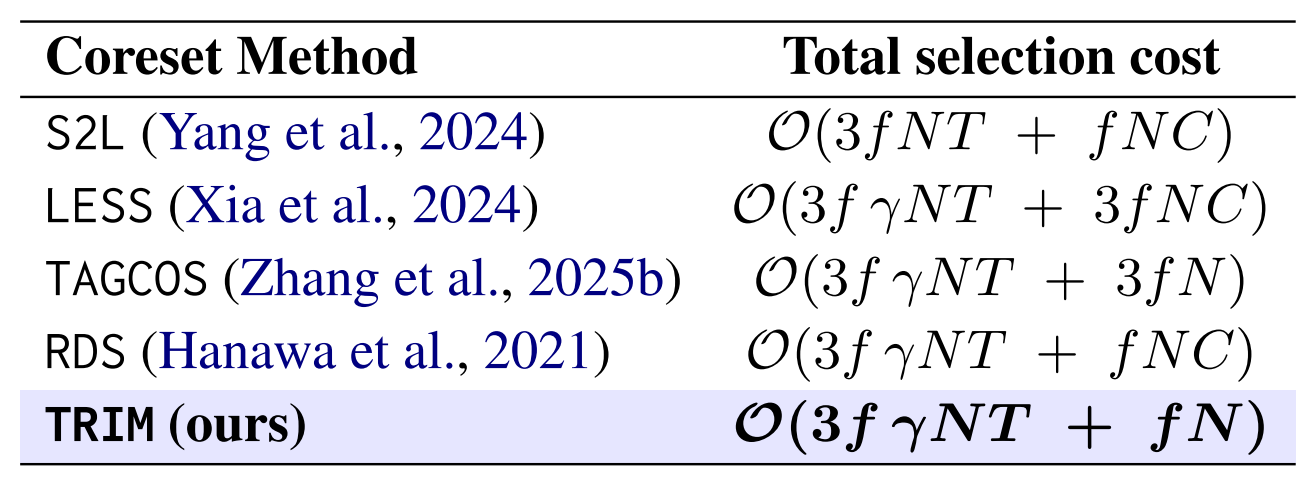
Practical guidance
- Target set size. 5–10 target samples per task suffice to build robust fingerprints; make them representative of the reasoning style you care about.
- Scope control. You can score prompt-only, response-only, or all tokens. For math/reasoning (GSM8K), response-focused often helps.
- Unseen tokens. Use the nearest fingerprint in embedding space with a penalty $\lambda\in(0,1]$.
- Pooling. Mean + max is a good default; if your data has rare “tell-tale” tokens, you can upweight the max term.
- Warmup. A brief 5% warmup stabilizes attention and hidden states for scoring; full re-training is not needed.
You can find more details in the full paper: (Nagaraj et al., 2025)
